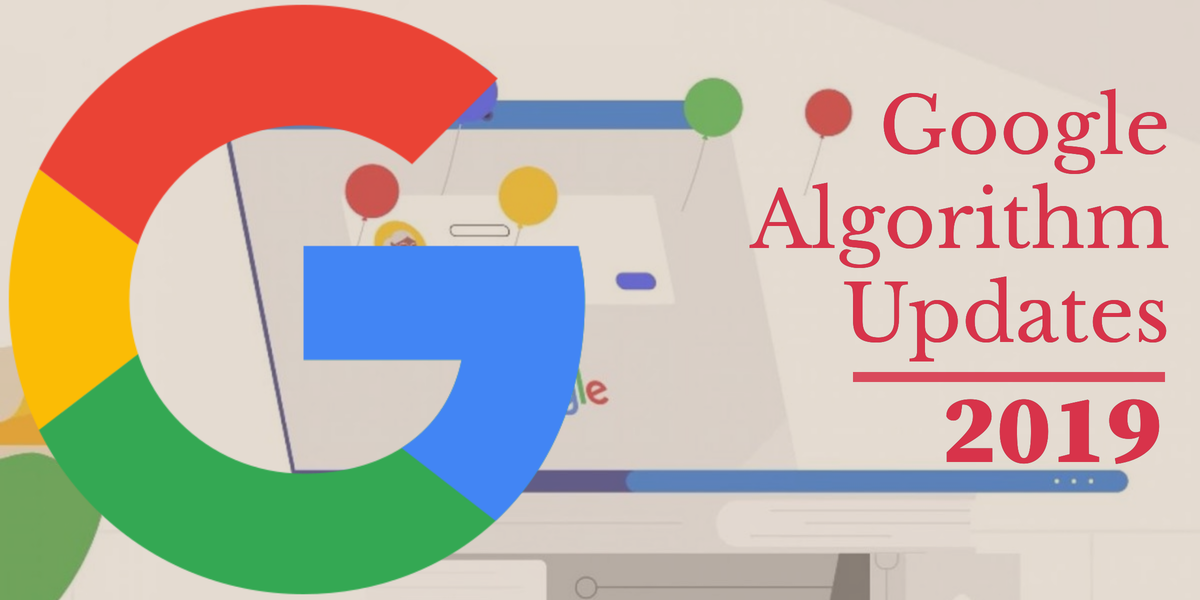Regardless of your business type, getting top online visibility can be a key part of your SEO strategy. In fact, websites that make it to the first page of Google searches score 36.4 percent of web traffic. The higher your ranking in a Google search, the more organic traffic you’ll realize.
However, Google comes up with plenty of updates throughout the year – including updates to some of the major core algorithms – to improve quality and search experience.
It is essential to pay attention to all these search engine algorithm updates that may affect your website’s ranking and visibility, such as Google Core updates, page speed updates, Panda, Penguin and Hummingbird.
Google Core Update for June 2019
Google doesn’t always give a heads up when it’s time to roll out a new core update, but this time they did. To determine whether your site was affected by the algorithm updates that impact how search results are ranked and listed, take a look at your web analytics and search console performance reports. If you’ve noticed a change in your site’s online rank or performance, Google suggests improving your site with better content, which could cause your rankings to rise in time.
Google Diversity Update
Different from the core update, the diversity “update” is actually a change—not an algorithm—that will reduce multiple site listings in search results to no more than two pages from the same site. Called the Site Diversity Change, it won’t affect all search results—at least not those Google considers to be relevant. In that case, some search results may show more than one result the web page is deemed important to the user entering the search phrase: the user intent when searching.
Mobile-First Indexing Update
The July 1, 2019, update will use “mobile-first” indexing as the default for all new websites. What this means is that if your site is not mobile-compatible, you may not rank as well as other responsive mobile-friendly websites. Also, it will affect your overall website ranking performance because of your perceived poorer user experience. If your site is older and hasn’t yet moved to a mobile format, you will still use desktop-first indexing until your site has been upgraded to include a mobile format. Google will still monitor and evaluate your web pages until they’re ready for the new indexing, and they will notify you via Search Console of their readiness. Although the new indexing doesn’t affect ranking per se, being mobile-friendly does affect ranking.
New Mobile SERP
When you do a search on a mobile device, you’ll notice a large video box at the top of the search results with two thumbnail videos below. The desktop version shows three videos in a row, all of comparable size. The difference is that the mobile SERP (Search Engine Results Pages) makes one video more prominent than the others.
Countless Updates to Improve Quality and Search Experience
Last year alone, Google made 3,200 changes to its search systems. It’s unknown how many of the approximately nine changes per day concerned core ranking versus changing the search box’s pixel location or font size, but they did involve search. Each one resulted in some type of improvement based on identified issues.
What You Should Do Following a Google Update
If you have good searchable content and follow the guidelines that apply—and are relevant—to your target audience, you’re off to a good start. You can also use this time to boost web traffic—especially if the updates have caused a drop in online visibility. If you’re not already using video to optimize your online presence, consider it a viable link-building strategy. Your website is 50 times more likely to get a first-page ranking if you include online video. It can improve your rank by:
- Increasing click-through rates because video is more likely to attract attention than text
- Lowering bounce rates because people spend 88 percent more time on your site if it includes video
- Generating 1,200 percent more shares than text and images combined
Why You Should Track the Google Updates
Not every update is significant to every company, and some go unnoticed altogether. However, many have dramatically impacted SEO and, ultimately, the ROI (return on investment) on a company’s website. Since your SEO strategy is your plan to drive traffic to your website, the context of the updates could positively or negatively impact your:
- Online visibility and ranking
- Organic traffic search
- Conversions
- ROI
- Company revenue
Depending on how your company is affected by Google’s thousands of annual changes to its algorithm, you might think your site is being punished—or, hopefully, rewarded for excellent content and a positive user experience. To know for sure whether you’ve been negatively impacted with a drop in traffic flow:
- Follow the proper sources, such as Google’s Official Webmaster Central Blog
- Audit your website
- Contact an expert if you’ve been penalized, but do it only after you’ve excluded other reasons for the penalty
- Create a strategy for recovery and follow it exactly
- Continue to create good SEO content
Contact Norton Norris, Inc. in Chicago for the marketing and training solutions your organization needs to succeed.
Comments are closed.


